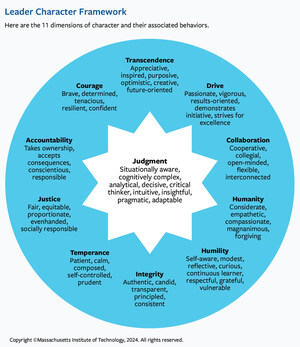CAMBRIDGE, Mass., Aug. 6, 2019 /PRNewswire/ -- When it comes to customer decisions, memorable experiences — and the ensuing positive word of mouth — can be as influential as price and functionality. To that end, the field of customer experience design has grown quickly in recent years, with consultants and academics pushing to find ways to ensure customers have positive touch points with companies while buying and consuming their products and services.
Yet there have been few, if any, meaningful improvements in customer experience over time, despite the resources, advanced technologies, and data analyses dedicated to this endeavor.
In a new article, "The Magic That Makes Customer Experiences Stick," released today by MIT Sloan Management Review (MIT SMR), Stefan Thomke illuminates a key missing ingredient from current approaches to customer experience design: emotion.
Thomke, a professor at Harvard Business School, first discovered the power of emotion in consumer experiences in the classroom, when he asked executive education students for their most memorable experiences as customers. He was surprised that instead of using the standard language of business — functional value, efficiency, cost-value analysis — to describe those experiences, they used phrases that reflected emotional impact, including: Made me feel special. Showed empathy. Really cared. Trusted me. Surprised us.
"The stories they shared — along with a deep dive into research on the many components of decision-making — led me to a critical insight: Customers want their choices to align as much with their feelings and senses as with their values and ethics," Thomke writes. "The rational approaches taught at most business schools — offer customers more value for money, add features, make service more efficient — are not enough."
The payoff for attending to a customer's emotions can be big. A report from Gallup suggests that organizations that optimize emotional connections outperform rivals by 26% in terms of gross margin and 85% in terms of sales growth. They cultivate emotionally engaged customers who are less price sensitive, less likely to buy from competitors, and three times more likely to recommend and repurchase.
Creating memorable emotional experiences for customers is not easy, and requires what Thomke describes as "emotional magic." He has identified five ways for companies to infuse customer journeys with emotion:
- Stimulate the senses. Sensory stimulation triggers emotions such as surprise, trust, joy, and even anticipation. Through products from cars to smartphones, clever companies like Ferrari and Apple carefully and intentionally engage and stimulate the senses to create emotional experiences.
- Turn disappointment into delight. Companies must be ready to transform negative experiences into positives. When employees are taught to be in tune with the customer's emotions, they can notice changes in emotional state and respond quickly.
- Plan to surprise. Companies can thrill customers again and again through continual innovation and unexpected solutions to problems. Some companies try to inspire a desire to surprise in their employees. For example, the Oberoi Group, a global hotel chain based in Delhi, gives its employees funding to surprise guests by turning problems into opportunities. Similarly, an equipment company has given its front-line employees a considerable budget to solve customer problems — without having to ask for approval. Company leaders call it the memorable experiences budget. Empowering employees with resources can extend your ability to surprise and delight your customers.
- Tell compelling stories. A good story, well told and repeated often, is a powerful way to create an emotional connection between customer and company. Companies that infuse stories into the customer's brand experience can provoke an emotional response and create sticky memories.
- Run controlled experiments. Because it is difficult to predict what emotions will be triggered and when during the customer's journey, the question companies must ask is not simply "What works?" but "What works where, when, and for whom?" By using controlled experiments to answer these questions, they are more likely to create great experiences that will never be forgotten.
"Sameness is forgettable," Thomke concludes about the power of emotion in a customer's experience and the opportunity companies have to make a customer's positive experience stick. "But varied emotional journeys can leave indelible memories, increase customer loyalty, and have multiplier effects in a world where customers are closely connected."
To read the full article, please visit: MIT Sloan Management Review.
About Stefan Thomke:
Stefan Thomke is the William Barclay Harding Professor of Business Administration at Harvard Business School and the author of the upcoming book, Experimentation Works: The Surprising Power of Business Experiments. (HBR Press)
About MIT Sloan Management Review
A media company based at the MIT Sloan School of Management, MIT Sloan Management Review's mission is to lead the conversation among research scholars, business executives, and other thought leaders about advances in management practice, especially those shaped by technology, that are transforming how people lead and innovate. MIT Sloan Management Review captures for thoughtful managers the creativity, excitement, and opportunity generated by rapid organizational, technological, and societal change.
Contact |
|
Emily Lavelle |
|
Emily Lavelle Communications |
|
+1-212-390-1328 |
|
SOURCE MIT Sloan Management Review

Related Links
WANT YOUR COMPANY'S NEWS FEATURED ON PRNEWSWIRE.COM?
Newsrooms &
Influencers
Digital Media
Outlets
Journalists
Opted In






Share this article